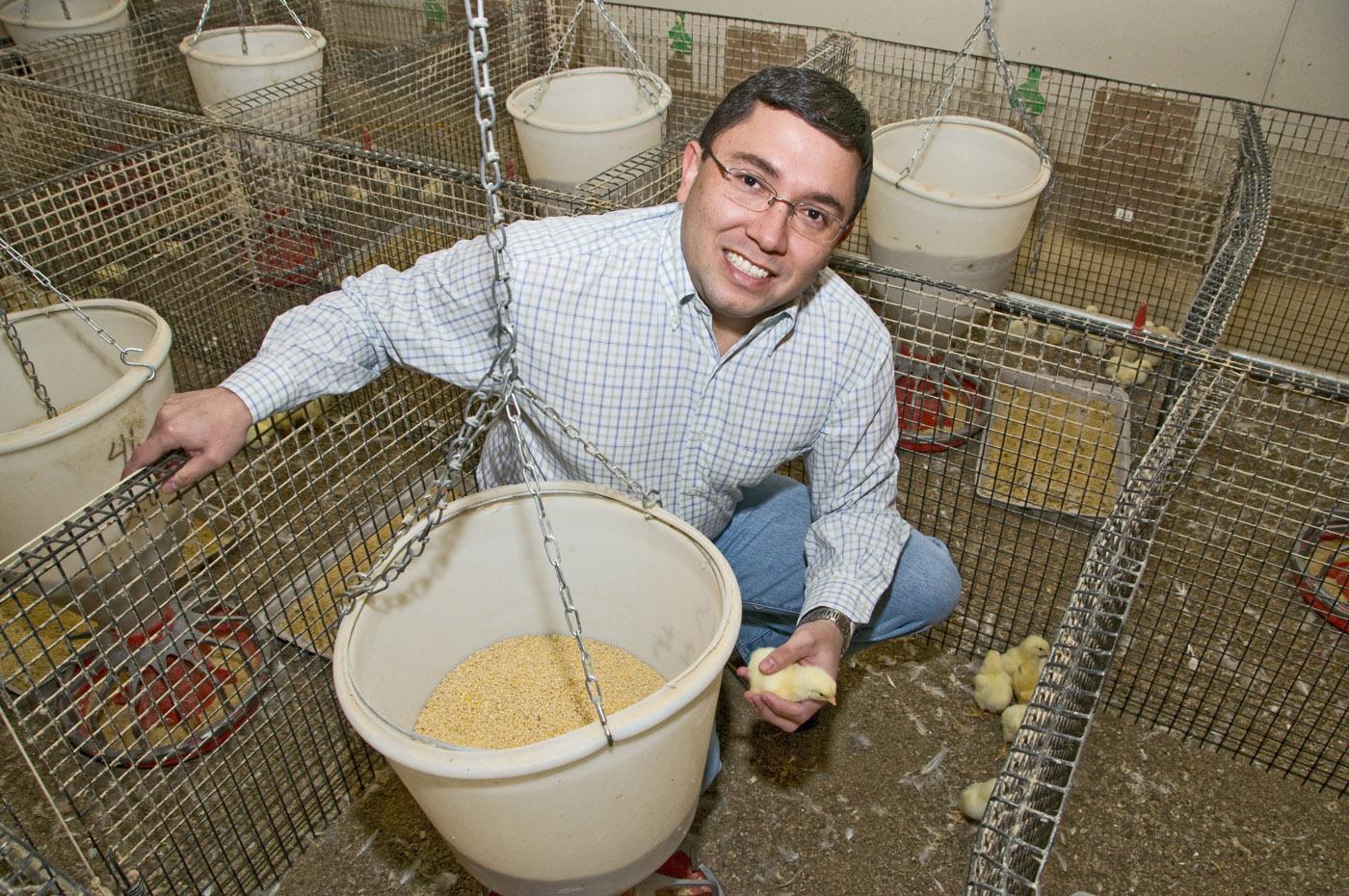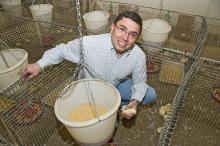Information Possibly Outdated
The information presented on this page was originally released on January 29, 2009. It may not be outdated, but please search our site for more current information. If you plan to quote or reference this information in a publication, please check with the Extension specialist or author before proceeding.
Ethanol byproduct can benefit poultry
By Karen Templeton
MSU Ag Communications
MISSISSIPPI STATE – Ethanol serves as an alternative to conventional fossil fuels, and researchers are finding ways the poultry industry can benefit from its production.
Demand for biofuels is due in large part to volatile fossil fuel prices. American businesses are embracing the shift toward renewable energy, and government mandates are making it more profitable for corn producers to sell the crop for ethanol production than for animal feed.
Ethanol is developed by fermenting starches from corn and other grains. The resulting ethanol becomes fuel, and a byproduct known as distillers dried grains with solubles, or DDGS, is left behind. Rather than let DDGS go to waste, the livestock and poultry industries are starting to use this nutrient-rich byproduct.
Alex Corzo, assistant poultry science research professor at Mississippi State University, and his colleagues are researching ways the poultry industry can best use DDGS. They are evaluating it as a commercial ingredient in poultry diets.
“We are testing how much DDGS can be incorporated into poultry diets without affecting the quality of meat and eggs,” he said. “It is not as simple as just adding DDGS to feed. We need to ensure we have the right balance of all relevant nutrients to maximize any possible benefits.”
Corzo has been evaluating the differences between poultry on conventional diets and poultry on feed containing DDGS.
“We have studied live production and carcass traits as well as color, texture and flavor of broiler meat,” Corzo said.
In collaboration with MSU's Department of Food Science, Nutrition and Health Promotion, the broiler meat from the different treatment groups was evaluated in a taste test. Participants tasted the meat from the control group and the group fed DDGS, and recorded scores for each. The initial testing showed there were no significant differences in broilers on the two different diets.
“Both treatments produce high-quality breast and thigh meat with minimal differences,” Corzo said. “There was a slight preference from consumers for the broilers fed traditional diets, but both products were well liked overall and received high scores from participants.”
Layer hens also were put to the test. Corzo and his colleagues fed hens one of five treatment diets containing increasing amounts of DDGS and then evaluated factors such as egg production and quality.
“There were no negative impacts on production of commercial layers with levels of up to 32 percent of DDGS in the diet,” Corzo said. “The layers had superior egg production with 16 percent DDGS incorporated into the feeding regimen. We also observed some benefits in regard to flavor and product acceptability with eggs from hens with DDGS in their diets.”
DDGS contains a significant amount of digestible energy and many nutrients, including fiber. Although fiber is an important component of most diets, it is not easily digested by poultry. If poultry diets are too high in fiber, problems with the absorption of nutrients can result, leading to bacteria growth.
“Certain bacteria can cause significant problems in a poultry house,” Corzo said. “To alleviate this problem, we are researching ways in which some fiber can be removed from DDGS.”
The research is still new, but Corzo and researchers in MSU's Department of Agricultural and Biological Engineering have seen improvements when broilers are fed DDGS diets with some fiber removed.
“Our goal is to find techniques that work and are easy for growers and feed companies to replicate,” Corzo said.
Mike Kidd, head of poultry science at MSU, said the industry is using DDGS and depends on Corzo's research to guide them.
“As corn prices rise, DDGS becomes a good alternative. We want to stay ahead of the curve in researching how this alternative can best suit the needs of the industry and consumers for years to come,” he said.
Corzo stays informed of the changing needs of the industry through open communication with growers and industry nutritionists.
“We learn from them, just as they learn from us. Getting firsthand accounts of DDGS-based diets aids us in our research, and we can share information with the industry on how to get the most nutritionally balanced feed at the cheapest cost,” he said.




